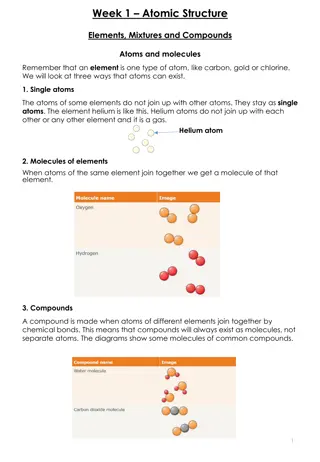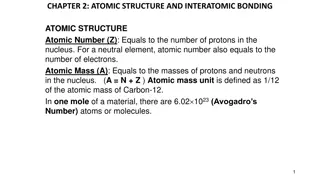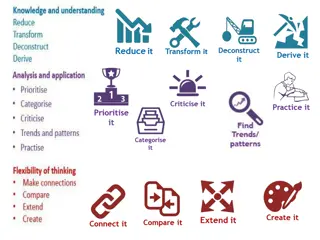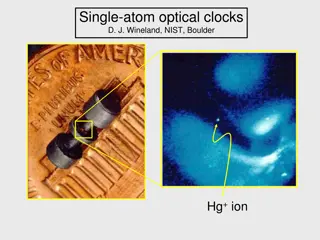On Transactions and Atomic Operations
Transactions in databases are crucial for ensuring data integrity. A unit of work is completed entirely or rolled back if needed, preserving consistency. Transactions exhibit properties like atomicity, consistency, isolation, and durability - forming the ACID model. Explore different types of transactions in SQL Server and understand the guarantees they provide, including dealing with nested transactions. Learn about named transactions and their impact on database operations.
Download Presentation

Please find below an Image/Link to download the presentation.
The content on the website is provided AS IS for your information and personal use only. It may not be sold, licensed, or shared on other websites without obtaining consent from the author.If you encounter any issues during the download, it is possible that the publisher has removed the file from their server.
You are allowed to download the files provided on this website for personal or commercial use, subject to the condition that they are used lawfully. All files are the property of their respective owners.
The content on the website is provided AS IS for your information and personal use only. It may not be sold, licensed, or shared on other websites without obtaining consent from the author.
E N D
Presentation Transcript
On transactions, and Atomic Operations Gail Shaw Entelect
Transactions The boundary of a unit of work A transaction completes entirely, or not at all A transaction can be committed, made part of the permanent database state, or rolled back, undone and leaving the database as if it had never run.
Transactional Properties A unit of work must exhibit four properties to be considered a transaction Atomicity (A) Consistency (C) Isolation (I) Durability (D) Together these are referred to as ACID
Transactional Types In SQL Server, transactions have three forms Auto-commit. Default mode. Every statement is an individual transaction Implicit Transactions. First statement starts a transaction, has to be explicitly committed Explicit Transactions. Start a transaction with BEGIN TRANSACTION, has to be explicitly committed.
Transaction Guarantees If the COMMIT is run, all changes made within the transaction are fully durable i.e. part of the persistent database state If the connection terminates without the COMMIT having run, the transaction is rolled back All changes made within the transaction are undone If SQL Server restarts, upon restart it will undo all data modifications which were part of transactions that did not commit
Nested transactions If transactions are nested, only the outer-most BEGIN TRANSACTION actually starts a transaction Subsequent ones just increment a counter Only the final commit actually commits the transaction The earlier ones just decrement a counter A single rollback anywhere, however, rolls back everything Nested transactions are a lie!
Named Transactions A name specified on a BEGIN TRANSACTION is for documentation purposes It will appear in a deadlock graph It will appear in transaction-related DMVs It does not change the behaviour of the transaction
Transactions and Locking Locks taken by a data modification are held until the end of the transaction In the default isolation level, shared locks are released at the end of the statement Need REPEATABLE READ isolation level for shared locks to be held until the end of the transaction There is nothing about a transaction which prevents other people from reading what you are reading Beware of the read and then update pattern
Transactions and Errors From the earlier discussion, it would be easy to conclude that errors encountered during a transaction cause a rollback. Books Online seems to imply that as well. However that is not the case
Transactions and Errors When wrapping multiple data modifications within a transaction for atomicity, error handling is essential Two ways of doing it Automatic, let SQL handle things Manual, explicitly defining what happens when there s an error
Manual error handling TRY CATCH blocks Any error which occurs in the TRY block causes the execution to be transferred to the CATCH block In the CATCH block, the error can be checked and either the transaction retried or rolled back. Can also re-throw the error for the application, or log it
Caveats, exceptions and special cases There are some database operations which do not roll back. Page splits, identity column increments, sequence increments Table variables do not participate in user transactions The DELAYED DURABILITY database option on SQL Server 2014 allows for committed transactions to be lost on a restart There are some errors which DO automatically roll back transactions, most DDL- related errors
In Conclusion Transactions provide a way for a number of data modifications be treated as a single atomic operation A transaction is automatically rolled back if the connection is terminated before it completes Errors do not cause a transaction to roll back by default Can be set to happen Can do manual error handling
Resources Demos on Github https://github.com/GilaMonsterZA/Demos Mini blog series on transactions http://sqlinthewild.co.za/index.php/2015/11/03/a-mess-of-nested-transactions/ (first in series) Concurrency is hard http://source.entelect.co.za/why-is-this-upsert-code-broken
Automatic error handling Controlled by the XACT_ABORT setting If that setting is on, any error which occurs within a transaction will result in the transaction being rolled back Still needs to be some error handling, but that can be in the calling app


































